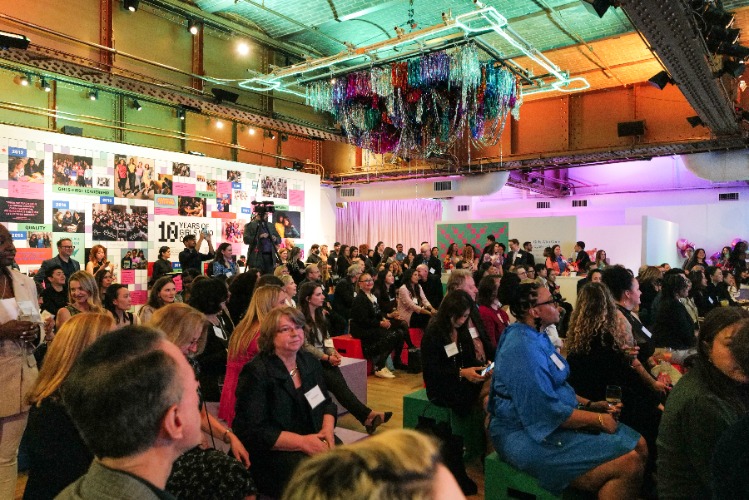
The innovation and progress of the tech industry in recent years is beyond impressive. With this said, there still seem to be major disparities in terms of diversity in the workplace. In light of these issues, it’s essential to have organizations that empower those underrepresented to take up space in the industry and use their voices for good. An esteemed organization making positive changes and providing inspiration is Girls Who Code.
With values such as bravery, sisterhood, and activism, Girls Who Code takes the initiative to close the gender gap in the tech industry with transformative opportunities such as clubs, summer programs, and college and career programs that help jumpstart tech careers for those who don’t have the proper resources. Additionally, Girls Who Code utilizes data-driven solutions to close the gender gap and achieve equality.
Dr. Tarika Barrett, CEO of Girls Who Code, spoke with Innovation & Tech Today about the importance of gender diversity in tech and how positive transformations can happen moving forward.
Innovation & Tech Today: Can you tell us about the mission and vision of Girls Who Code?
Tarika Barrett: Girls Who Code is an international nonprofit organization working to close the gender gap in technology, and is leading the movement to inspire, educate, and equip students who identify as girls or nonbinary with the computing skills needed to pursue 21st-century opportunities. Since launching in 2012, Girls Who Code has reached 580,000 students through our in-person and virtual programming, and 185,000 of our alumni are college or career-aged.

I&T Today: How do Girls Who Code address and challenge stereotypes?
TB: At Girls Who Code, we always say you can’t be what you can’t see. Girls learn in school and through culture about men like Bill Gates, Mark Zuckerberg, Albert Einstein, and Neil Armstrong — but not about the women pioneers in the field like Katherine Johnson, Ada Lovelace, and Jean Bartik.
We work to address these challenges by ensuring that women and nonbinary individuals in STEM are centered in our curriculum. We want our students to understand that diverse people are foundational to the history of STEM. We also place a significant focus on culture campaigns, informed by our community, that bring our mission to the forefront of the national conversation.
I&T Today: In your opinion, what are some of the factors that continue to contribute to the underrepresentation in tech and STEM fields?
TB: We know that top universities get significant attention from recruiters, but what about community colleges and state schools? I, myself, went to a City University of New York college along with other working-class kids. Young women from historically under-represented groups make up more than half of our Girls Who Code community.

These young women are clearly motivated and ready to learn but often don’t have the same opportunities. They might work multiple jobs while carrying a full college course load, have to balance homework with caregiving responsibilities, or do not have the same resources in their communities that others have. They are the embodiment of bravery and resilience — qualities that are critical to all companies but are not always reflected in conventional academic credentials that tech firms overwhelmingly rely on. This is self-defeating.
Last, the punishing work culture in tech, rooted in systemic racism and sexism, often alienates young women and women of color once they get their first job in the tech industry. Half of women in tech roles leave by the age of 35, many of them because they felt their workplace was inhospitable to women. Maybe these offices didn’t have adequate parental leave policies, or women weren’t represented in the ranks of leadership, or there was just a toxic corporate culture.
I&T Today: How can businesses and tech companies create a more inclusive and diverse tech workforce?
TB: There are definitely tangible actions that companies can take to open the doors to more racially and gender-equitable workplaces. But, those actions must also be paired with a thoughtful critique. Why did it take us so long to implement these changes? Why was a particular policy that negatively impacted women and people of color normalized in the first place?
So many traits of a white supremacist work culture — perfectionism, professionalism, power hoarding, and paternalism — have become synonymous with the tech industry.
We see every day how this has resulted in a concentration of power in tech leadership, how it fuels a “tech bro” culture, and how it leads to burnout. At Girls Who Code, we try to encourage companies to look deeply at their own practices and interrogate what they might be doing to alienate women and people of color, or what they are doing to prevent them from being hired in the first place.

Every company is different and so there’s no blueprint for this type of process. What
we’re really asking is that people keep an open mind — redefining what they see as an appealing hiring candidate, and assessing promotion practices that keep women and women of color out of leadership positions. That kind of self-reflection is difficult, but it can be the difference between an all-white, male office and an office that more accurately reflects the world we are living in today.
I&T Today: Looking ahead, what are your goals for Girls Who Code in the coming years?
TB: We just celebrated our 10th anniversary in 2021 — a huge milestone for our organization. We’ve already served 580,000 students since our founding, and are on track to close the gender gap in entry-level tech jobs by 2030. However, we’re now looking toward a new north-star goal to reach 1 million students in the next 10 years.










